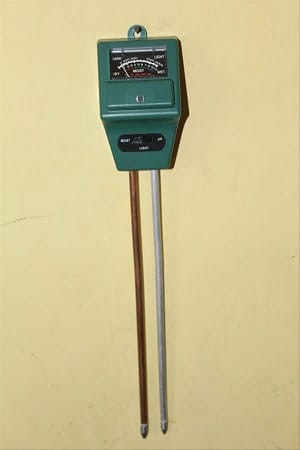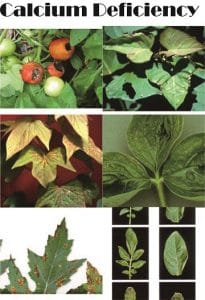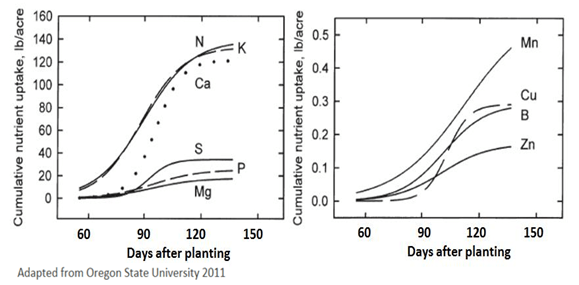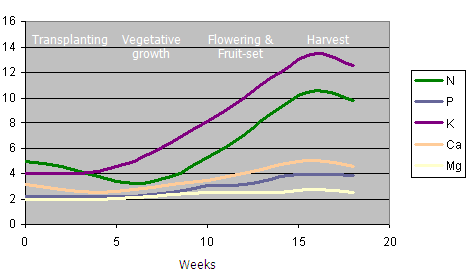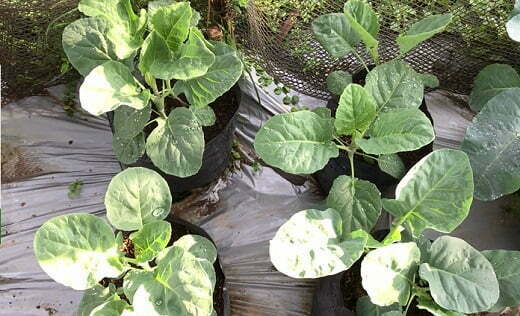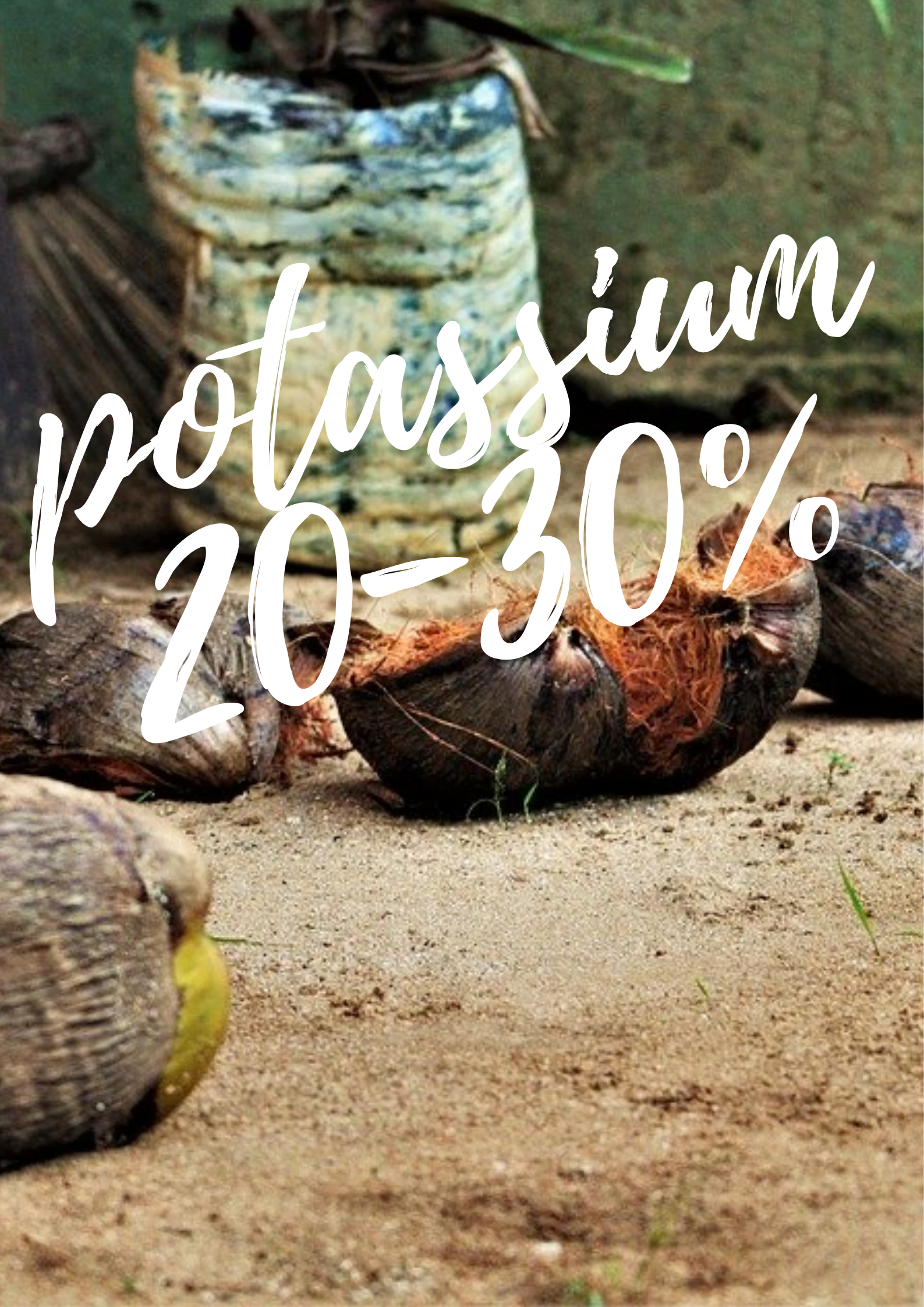How to feed calcium to plants? We can do this in 4 ways as follows:
as basic fertilizer
sow fertilizer
drip fertilizer
and foliar fertilizer.
In each of the methods above, there is a suitable type of fertilizer.
For example, dolomite lime is better if it is used as a basic fertilizer. Namely, the application of dolomite is carried out at the beginning of tillage.
The application of dolomite as a source of calcium in addition to increasing soil pH, is also a source of calcium in plants.
Usually, farmers do not do supplementary fertilizer for calcium after they have applied it as basic fertilizer.
Drip fertilizers and foliar fertilizers for calcium should be water-soluble materials. Of course, this is not dolomite or gypsum as the source.
Later we try to find out how many sources of calcium fertilizer we can get.
Source of calcium for plants
Calcium fertilizer is a fertilizer that contains calcium and the calcium can be used and absorbed by plants.
Examples are:
Dolomite lime (CaMg(CO3)2.
Calcite (CaCO3).
Gypsum (CaSO4).
TSP
Calcinite from Yara Liva contains 19% calcium oxide.
CNG calcinite 26.5% CaO.
Sources of calcium such as dolomite, calcite, and gypsum are more suitable if given as basic fertilizer or sow.
Because it also serves to increase the pH of the soil and its needs are quite a lot when preparing the land.
The small amount of dolomite needed is sometimes not calculated based on the needs of the plant, but from the pH value of the soil.
We can measure soil pH with the tool. The shape is like the image below for the analog one. While the digital one, please look for yourself. There’s a lot of info.
After knowing the soil pH, the recommendations for dolomite administration are as follows:
| Soil pH | Dolomite recommendation |
| 4 | 10.24 tons/hectare |
| 4.5 | 7.87 tons/hectare |
| 5 | 5.49 tons/hectare |
| 5.5 | 3.12 tons/hectare |
| 6 | 0.75 tons/hectare |
What if the soil pH is above 6? This means that the land already contains sufficient calcium nutrients. Is it true? Please comment.
However, if the plant shows signs of calcium deficiency symptoms, then the provision of calcium fertilizer in other ways needs to be done.
Calcinite and calcite are crystalline fertilizers that are water-soluble.
Both can be given by sowing, drops, or foliar (through the leaves). If it is used as basic fertilizer, farmers can go bankrupt.
Because the calcium contained in both binds to nitrate, the amount given must be calculated with other fertilizers. Because plants will get two macro elements, namely nitrogen (in the form of nitrate) and calcium.
We can follow the dosage contained in the instructions for use.
The importance of calcium fertilizer in plants
Calcium should be important for plants. But it is often overlooked and underappreciated.
And we also have to know, that calcium is one of the macro elements. Elements that must be present and needed in large quantities by plants.
I prefer to think of the role of calcium in this plant as behind the scenes.
Because the benefits of calcium are not visible to the naked eye. Plants also do not appear physically, that they are sufficient in calcium.
In contrast to elements such as NPK. Plants that are fulfilled by NPK, vigor or posture are large and tall. The leaves become wider, greener, and taller.
Calcium is not like that. As long as the plant is not too deficient in calcium, it does not show any difference in plant vigor.
Only when the plant is experiencing a calcium deficiency, the symptoms appear. It’s not fair, when it’s enough, the plants are normal, when there’s a lack of calcium, the plants will be damaged.
Signs or symptoms of plants experiencing calcium deficiency are:
- Leaves curl and shrivel. Pale hard and a little drooping.
- The shoots of the leaves are scorched, sometimes the young leaves have yellow spots or there are burns on the tips of the leaves.
- Defective fruit.
- Stunted plant growth
- The leaves turn yellow, shrivel, are small, and fall easily or in other words, the age of the leaves becomes short.
- Flowers and fruit fall off easily
- Plants are susceptible to disease
- Low yield quality
- Crops are easily damaged and rot
- Absorption of nutrients by plant roots is hampered because root growth becomes stunted.
How to feed calcium to plants to overcome the symptoms is with foliar fertilizer.
Giving calcium by way of foliar is the fastest. By using fertilizers that are well soluble in water. An example is calcium nitrate.
Within a few days, if done regularly, the symptoms will get better. But still, a source of calcium in the growing media must be given.
Because giving through the leaves is only limited. If it is not given continuously, the leaves will not get a calcium supply.
Plant needs for calcium
Calcium is needed by plants, because calcium will function as follows:
Involved in plant metabolic processes including influencing how well plants can absorb other important elements.
Helps plant cell development. Because calcium is an important constituent of plant cell walls. Simply, we can imagine what if the wall (cell wall) is perforated due to loss of calcium. The cell wall will be weak and brittle.
Calcium is involved in many processes related to enzymes and growth hormones.
Plants with sufficient calcium will be more resistant to heat stress.
With a strong plant cell wall, calcium indirectly helps plants to be more resistant to fungal and bacterial attacks.
Calcium is very influential on the quality of the fruit.
How much do plants need calcium?
The amount of calcium needed by plants is not as much as macro elements such as N, P and K. However, calcium is constantly needed at each growth stage.
Here is a graph of the absorption of some important nutrients in plants.
From the two graphs above, we can see that the calcium requirements for plants are different.
For tomatoes, for example, calcium requirements are almost constant. Unlike onions, the need for calcium is as high as Nitrogen and K.
For calcium needs in plants, I have collected several reliable articles in the table below.
| Plant needs for calcium | |
| Plants | Calcium in CaO |
| Eggplant | 120 kgs/hectare |
| Paprika | 95 – 347 kgs/hectare |
| Melon | 180 kgs/hectare |
| Garlic | 60 kgs/hectare |
| Tomato | 126 kgs/hectare (Basic fertilizer) |
The need for calcium above is still in the form of calcium oxide. This means that it is not the amount of fertilizer as a source of calcium.
So, in the form of fertilizer, the amount will be even greater.
For example, we will use dolomite.
The amount of calcium in dolomite is as much as 26%. so to calculate the amount of dolomite needed, we can calculate it like this.
An example is for eggplant. The CaO requirement is 120 kg/hectare.
In dolomite, the calculation is as follows.
Dolomite = (120 x 100 ) : 26 = 12000 : 26 = 461.5 kg/hectare.
We can use the same method to calculate the dolomite requirement in chilies, melons, garlic and tomatoes.
I think that’s enough for how to feed calcium to plants. If possible, I will specifically discuss the calcium requirements for chilies, tomatoes and several other types of plants.
Sorry if there are many shortcomings. Thank you and see you later.
Reference
[1] haifa-group.com
[2] smart-fertilizer.com
 JOYNIM FARM Goat Farming, Cattle Farm, Laying Hens, Quail Farm, Gardening
JOYNIM FARM Goat Farming, Cattle Farm, Laying Hens, Quail Farm, Gardening

